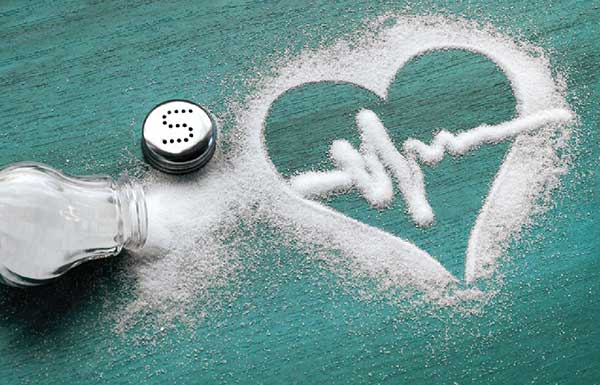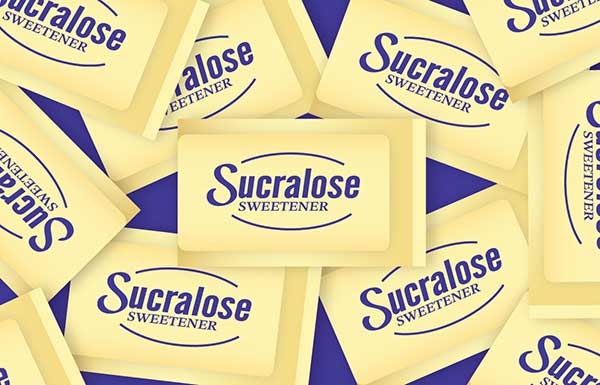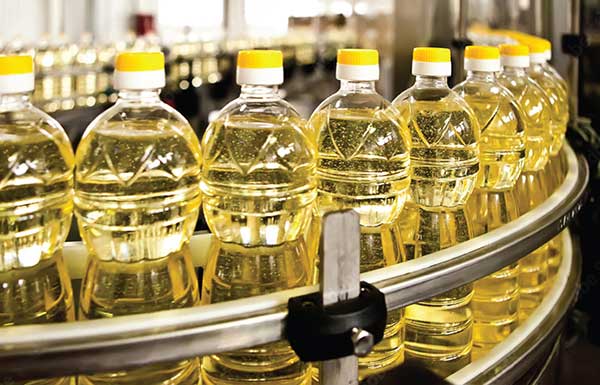
BY DR. BAYNE FRENCH
Sugar Refresher:
Lots of things are called "sugar". In my fighting days, they called me Sugar French. Later, I learned it was because people loved to fight me, but that’s not important.
Although my fighting record was not what I had hoped, it’s important to know that true sugar is sucrose. Sucrose is composed of a molecule of glucose bound to a molecule of fructose. After sugar ingestion (which hopefully occurs rarely), the enzyme protein sucrase cuts it in half. Glucose and fructose are then absorbed into the bloodstream.
Fructose occurs naturally in fruit, agave, honey, and some vegetables. Unprocessed fructose-containing foods have relatively low amounts; The fiber and phytonutrients within them cause the fructose to be absorbed into the blood slowly, which is favorable metabolically.
High fructose corn syrup (HFCS) is NOT naturally occurring. It is highly unfavorable. It is over 50% fructose and as high as 65%. It was developed in 1957 at Oklahoma State University. HFCS made it into our food in the 1970's. In 1984, both health-food companies Coca-Cola and Pepsi changed from sucrose to HFCS. I have endurance athletes in my practice who regularly drink these beverages. They have a gut, acne, bloat, fatty livers, and pre-diabetes.
HFCS is so biologically active and metabolism perturbing that finding evidence of Fatty Liver Disease in regular soda drinkers is almost predictable, including in endurance athletes.
The glucose piece of sugar elevates blood sugar, spiking insulin and driving the formation of fat. Over time, insulin elevation leads to insulin resistance and eventual Type 2 diabetes.
So, sugar (sucrose) has two weapons: glucose and fructose. Like me in my fighting days…run away and play dead.
Let Me Impress You With Other Big Words:
1) If I were a high-level endurance athlete, who I am, I would want to have heaps of nitric oxide (NO) in my body. NO does many favorable things and is generated in numerous tissues, including the heart, liver, and the inside lining of blood vessels.
Like most things human, the biochemistry of NO is vastly complicated. What is well understood is that it increases blood flow to tissues (vasodilates). It also facilitates the entry of glucose into muscle cells.
If I were going to run really far and fast or pack a 700-pound elk out of the mountains in pieces, I would like to have more blood getting to my muscles and more glucose entering those muscle cells. Wouldn't you?
You know where I'm going with this: sugar interferes with the formation of NO. As I said in my recent article on Uric Acid: "Why in the hell would you want to consume sugar with any regularity or EVER fuel with it?"
2) Many ultra-high level, Olympic caliber, freaky-good, scary strong, savage monsters like me know that your performance depends on your kidneys. Yep, those beans in each flank determine fluid and electrolyte balance. They are trained, just like your muscles and mind. Sugar, primarily through its fructose half, drives the formation of Antidiuretic hormone (ADH). ADH is a fascinating hormone (like all things human) made in the brain, then stored and released by the pituitary gland.
ADH is important for athletes. As its name implies, it interferes with diuresis (taking a leak). We thus hang onto the water, which is important in the setting of dehydration. ADH levels are usually elevated with heavy exertion, and hey, let's face it, nobody wants to stop and pee during a race, which is why I loved Obstacle Course Racing. You're already wet and muddy, which makes something else convenient.
Excessive ADH is a performance inhibitor causing excess fluid accumulation, which distorts one's "power-to-weight ratio." The more weight you pack around, the worse your power. ADH, unfortunately for athletic performance, also causes vasoconstriction. Recall that nitrous oxide is a vasodilator, enhancing blood flow to muscle. ADH reduces blood flow to muscle.
You know where I'm going with this: sugar drives the formation of ADH. Sugar directly causes more fluid accumulation and less blood flow to your muscles. Companies that promote sugar as an outstanding endurance fuel are either duplicitous or ignorant. And ignorance in a field in which you profess expertise is idiocy.
3) People always say, "I want to lose weight." Nope. What you want to do is burn fat. That’s more specific, right? "I want to run (bike, swim, etc.) faster ." Nope. What you want is to have your muscle cycle faster and longer without fatiguing. This is not semantics.
Meet Adenosine triphosphate, ATP. The chemical energy in this compound is converted to mechanical energy during muscle cell cycling. ATP is the absolute basic energy currency of our body. Its generation and subsequent utilization are paramount to optimal athletic performance. The mitochondria inside our cells make this compound.
You know where I'm going with this: below is an excerpt from my recent Uric Acid article,
"When we consume sugar, the enzyme fructokinase metabolizes the fructose piece. This process uses ATP. Douard et al (J of Phys. Jan 2013) showed that a cellular fructose load, as provided by sugar-sweetened beverages, causes ATP to reduce by 40-50%. Sugar impairs performance by depleting our primary energy currency. The notion that sugar is a good fuel source for endurance pursuits is deeply physiologically and biochemically flawed, and in essence, science shows the opposite is true."
Summary:
Outlined above are fundamental, biochemical reasons why sugar is antithetical to optimal athletic performance. It's antithetic to daily, non-athletic performance.
Sugar as a foundational business model compound needs to die off, and the sugar-producing/promoting companies and their philosophies should go away… it's as simple as that.
To enact a durable and real change, it must occur on an individual level. Meaning YOU do things differently. Educate yourselves, align with what makes sense to you, associate with whom you feel is operating in an authentic way, then go kick ass.









24 comments
I always look forward to Dr. French’s articles. I read every word. I have also taken his conclusions on triglycerides, HDL,LDL ratios to my doctor to support my contention that I don’t need medication.
She agreed.
As far as sugar: Can you give a guideline on a daily sugar intake, below which it’s not so worrisome?
Say – % daily calories, g/kg body weight….?
It’s just so hard to avoid that zero grams per day isn’t possible for me.
Thank you.
———
Hammer Nutrition replied:
Naturally occurring sugar from whole fruits and vegetables is not the issue in terms of daily sugar intake because these foods contain water, fiber, some vitamins and minerals, and numerous health-benefiting phytonutrients. The real issue is added sugar in the diet. The Dietary Guidelines for Americans 2020-2025 (https://www.dietaryguidelines.gov/sites/default/files/2020-12/Dietary_Guidelines_for_Americans_2020-2025.pdf#page=31) advise that all Americans 2 years and older limit added sugars in the diet to less than 10% of total calories. For a 2,000 calorie/day diet, that translates into 200 calories or 50 grams of sugar daily (about 12 teaspoons of sugar). The American Heart Association recommends a lower amount of added sugar (https://www.heart.org/en/healthy-living/healthy-eating/eat-smart/sugar/how-much-sugar-is-too-much), recommending that men should consume no more than 9 teaspoons (36 grams or 150 calories) of added sugar per day, while women should consume no more than 6 teaspoons (25 grams or 100 calories) of added sugar per day.
Great article! Never thought about peeing during an obstacle course race ( until now ) haha. HFCS = evil
Great article as always! Where do you stand on Maple syrup?
———
Hammer Nutrition replied:
If you love maple syrup, there’s no reason not to enjoy it occasionally (life’s too short!) However, it is very important to limit your consumption because of its composition. At https://www.sciencedirect.com/science/article/abs/pii/0963996996000002, “A total of 80 pure maple syrup samples received from primary producers in Canada and the United States were analyzed for their chemical composition, pH and oBrix.The major carbohydrates found in maple syrup (sucrose, glucose and fructose) were determined employing anion exchange high performance liquid chromatography (HPLC) with pulsed amperometric detection. The sucrose content was found to range from 51.7 to 75.6%; glucose and fructose contents ranged from 0.00 to 9.59% and 0.00 to 3.95%, respectively.” As you can see, maple syrup is extremely high in these short-chain sugars, which is why consumption of maple syrup should be limited to occasional use only.
Say what? No more gels, low carbs? Crystalline Fructose is a low glycemic sweetener. Why isn’t this the best fuel?
———
Hammer Nutrition replied:
It’s important to first know that “sugar” is definied as one- or two-chain molecules known as monosaccharides and disaccharides, with anything ending in “ose” (glucose, sucrose, fructose, etc) falling into that category. Molecules that contain many sugar units chained together are called polysaccharides, known familiarly as complex carbs (in essence, a “complex sugar”) and starches, one of which is maltodextrin, which is what we use in our fuels. When Dr. French is discussing sugar in the article, he is referring to the short-chain monosaccharides and disaccharides, not complex carbohydrates.
During exercise and immediately following, a high-glycemic carbohydrate is the more-ideal choice than any short-chain sugar, including fructose, which is why we use maltodextrin in our fuels. Maltodextrin goes to work extremely quickly in producing energy because it’s a high GI carbohydrate; in fact, it’s the same as pure glucose (both are 100). That’s a good thing because you want that energy as quickly as possible, and that’s what maltodextrin will do. Another benefit with maltodextrin is that, because it’s comprised of hundreds of saccharide molecules all weakly bonded together, it will provide a much more consistent and longer-lasting energy than glucose or any other simple sugar, and without that undesirable “peak and valley”, “flash and crash” energy that is typical with simple sugars.
Additionally, you can digest greater amounts of calories from maltodextrin than from any short-chain sugar, aka “simple sugar,” such as glucose, sucrose, and fructose (As one nutritional scientist states, “maltodextrin allows one to swallow more energy in less volume.”) With maltodextrin you get the full amount of calories that you need for energy production, and with no delay in exiting the GI tract. Fuels containing simple sugars must be mixed at very calorically weak solutions in order to be digested with any efficiency, so your body won’t be getting the right amount of calories it needs. However, when athletes try to make a “double-strength” mix of a simple sugar fuel, that too-high sugar mixture does not match body fluid osmolality, which means it just sits in the stomach undigested for a lengthy period of time… and that means severe stomach distress. You won’t have that issue with maltodextrin.
As Dr. French discusses in this article, and in even more detail in Part 2 of his Uric Acid article (https://hammernutrition.com/blogs/endurance-news-weekly/uric-acid-part-2), “Adenosine triphosphate, ATP, is the energy currency of our body. It is generated by the mitochondria within our cells. For you athletes, lots of ATP generation is critical to performance. With training, we develop enhanced mitochondrial ability to make ATP. When we consume sugar, the enzyme fructokinase metabolizes the fructose piece. This process uses ATP. Douard et al. (J of Phys. Jan 2013) showed that a cellular fructose load, as provided by sugar-sweetened beverages, causes ATP to reduce by 40-50%. Sugar impairs performance by depleting our primary energy currency. The notion that sugar is a good fuel source for endurance pursuits is deeply physiologically and biochemically flawed, and in essence, science shows the opposite is true.”
I discuss the GI of fructose in my article at https://hammernutrition.com/blogs/endurance-news-weekly/fructose-the-worst-of-the-worst…
Additionally, while some companies tout fructose as a “slow-burning” carbohydrate, courtesy of its low Glycemic Index (GI) of approximately 19 to 25, GI that low makes fructose more of a “no-burning” carbohydrate. More importantly, in the words of Dr. Robert Lustig, “Yes, fructose has a low glycaemic index of 19 because it doesn’t increase blood glucose. It’s fructose, for goodness sake. It increases blood fructose, which is way worse. Fructose causes seven times as much cell damage as glucose because it binds to cellular proteins seven times faster and releases 100 times the number of oxygen radicals (such as hydrogen peroxide, which kills everything in sight).”
Lastly, recent research in the journal Obesity (https://onlinelibrary.wiley.com/doi/10.1002/oby.23920) suggests various theories behind what drives obesity are not incompatible with each other, and that they can all be brought together in one unified pathway that centers around one true driver: fructose. Lead researcher, Dr. Richard Johnson states, “Fructose is what triggers our metabolism to go into low power mode and lose our control of appetite, but fatty foods become the major source of calories that drive weight gain.”
Bottom line: For many general health reasons, aside from the naturally occuring fructose in whole fruits and vegetables, this simple sugar should be avoided for many reasons. Additionally, is undoubtedly the poorest carbohydrate choice for athletes.
Thank you for these excellent articles Dr French. You explain things so well. I am learning a lot.
The more I read about sugar, the more I wish it wasn’t so promoted in our society.